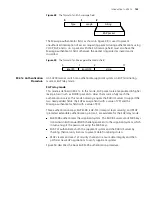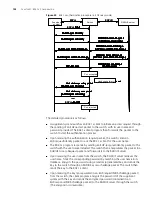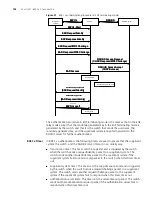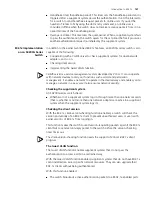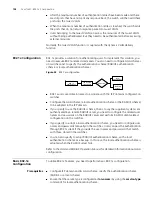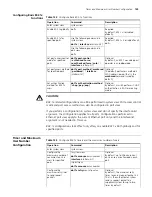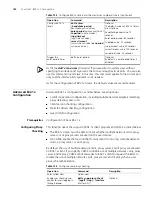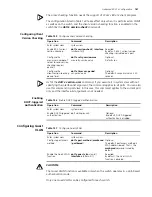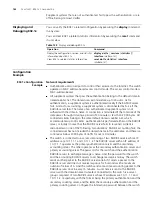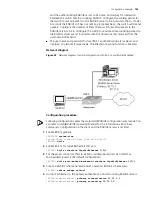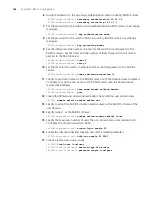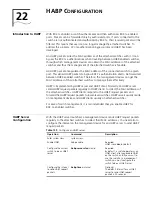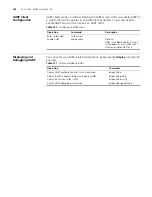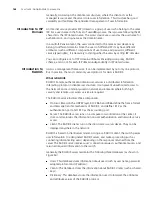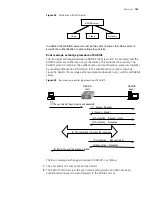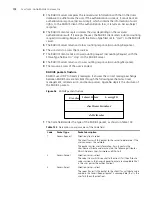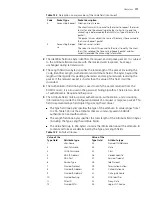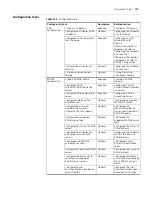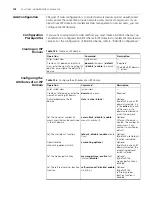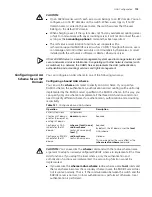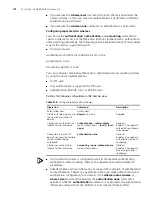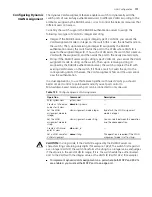
162
C
HAPTER
21: 802.1
X
C
ONFIGURATION
Supplicant systems that are not authenticated, fail to pass the authentication, or are
offline belong to Guest VLANs.
Displaying and
Debugging 802.1x
You can verify the 802.1x-related configuration by executing the
display
command
in any view.
You can clear 802.1x-related statistics information by executing the
reset
command
in user view.
Configuration
Example
802.1x Configuration
Example
Network requirements
■
Authenticate users on all ports to control their accesses to the Internet. The switch
operates in MAC address-based access control mode. The access control mode is
MAC-address-based.
■
All supplicant systems that pass the authentication belong to the default domain
named aabbcc.net. The domain can accommodate up to 30 users. As for
authentication, a supplicant system is authenticated locally if the RADIUS server
fails. And as for accounting, a supplicant system is disconnected by force if the
RADIUS server fails. The name of an authenticated supplicant system is not
suffixed with the domain name. A connection is terminated if the total size of the
data passes through it during a period of 20 minutes is less than 2,000 bytes. All
connected clients belong to the same default domain: aabbcc.net, which
accommodates up to 30 clients. Authentication is performed either on the RADIUS
server, or locally (in case that the RADIUS server fails to respond). A client is
disconnected in one of the following two situations: RADIUS accounting fails; the
connected user has not included the domain name in the username, and there is a
continuous below 2000 bytes of traffic for over 20 minutes.
■
The switch is connected to a server comprising of two RADIUS servers whose IP
addresses are 10.11.1.1 and 10.11.1.2. The RADIUS server with an IP address of
10.11.1.1 operates as the primary authentication server and the secondary
accounting server. The other operates as the secondary authentication server and
primary accounting server. The password for the switch and the authentication
RADIUS servers to exchange message is name. And the password for the switch
and the accounting RADIUS servers to exchange message is money. The switch
sends another packet to the RADIUS servers again if it sends a packet to the
RADIUS server and does not receive response for 5 seconds with a maximum
number of retries of 5. And the switch sends a real-time accounting packet to the
RADIUS servers once in every 15 minutes. A user name is sent to the RADIUS
servers with the domain name truncated. Connected to the switch is a server
group comprised of two RADIUS servers whose IP addresses are 10.11.1.1 and
10.11.1.2 respectively, with the former being the primary authentication and the
secondary counting server, and the latter the secondary authentication and the
primary counting server. Configure the interaction password between the switch
Table 128
Display and debug 802.1x
Operation
Command
Display the configuration, session, and statistics
information about 802.1x.
display dot1x
[
sessions
|
statistics ]
[
interface
interface-list
]
Clear 802.1x-related statistics information
reset dot1x statistics
[
interface
interface-list
]
Summary of Contents for 4200G 12-Port
Page 10: ...8 CONTENTS...
Page 14: ...4 ABOUT THIS GUIDE...
Page 46: ...32 CHAPTER 5 LOGGING IN THROUGH WEB BASED NETWORK MANAGEMENT SYSTEM...
Page 48: ...34 CHAPTER 6 LOGGING IN THROUGH NMS...
Page 60: ...46 CHAPTER 9 VLAN CONFIGURATION...
Page 64: ...50 CHAPTER 10 MANAGEMENT VLAN CONFIGURATION...
Page 80: ...66 CHAPTER 13 GVRP CONFIGURATION...
Page 98: ...84 CHAPTER 15 LINK AGGREGATION CONFIGURATION...
Page 112: ...98 CHAPTER 18 MAC ADDRESS TABLE MANAGEMENT...
Page 126: ...112 CHAPTER 19 LOGGING IN THROUGH TELNET...
Page 162: ...148 CHAPTER 20 MSTP CONFIGURATION...
Page 274: ...260 CHAPTER 29 IGMP SNOOPING CONFIGURATION...
Page 276: ...262 CHAPTER 30 ROUTING PORT JOIN TO MULTICAST GROUP CONFIGURATION...
Page 298: ...284 CHAPTER 33 SNMP CONFIGURATION...
Page 304: ...290 CHAPTER 34 RMON CONFIGURATION...
Page 338: ...324 CHAPTER 36 SSH TERMINAL SERVICES...
Page 356: ...342 CHAPTER 38 FTP AND TFTP CONFIGURATION...
Page 365: ...Information Center Configuration Example 351 S4200G terminal logging...
Page 366: ...352 CHAPTER 39 INFORMATION CENTER...
Page 378: ...364 CHAPTER 40 BOOTROM AND HOST SOFTWARE LOADING...
Page 384: ...370 CHAPTER 41 Basic System Configuration and Debugging...
Page 388: ...374 CHAPTER 43 NETWORK CONNECTIVITY TEST...
Page 406: ...392 CHAPTER 45 CONFIGURATION OF NEWLY ADDED CLUSTER FUNCTIONS...






